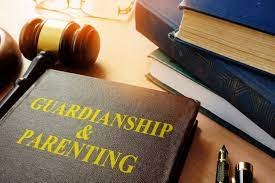Adoption and guardianship are important legal procedures that play a crucial role in providing stability and care for children who cannot live with their biological parents. Understanding the intricacies of these processes is essential for anyone considering becoming an adoptive parent or guardian.
This article will delve into the basics of adoption and guardianship, what is family law, outline the legal steps involved, and discuss the pros and cons of each option.
Understanding the Basics of Adoption and Guardianship
Defining Adoption and Guardianship
Adoption is a legal process by which an individual or couple becomes the permanent legal parents of a child. It involves terminating the parental rights of the child’s biological parents and establishing a new legal relationship. This process is often seen as a beautiful way to create a family, as it allows individuals or couples to fulfill their dreams of becoming parents and provides a child with a loving and stable home.
On the other hand, guardianship is a legal relationship where a responsible adult is appointed to care for and make decisions on behalf of a child, without terminating the parental rights of the biological parents. This arrangement is often put into place when the child’s biological parents are unable to provide proper care or make important decisions for the child. It allows the child to have a stable and nurturing environment while still maintaining a connection to their biological family. Click here for legal rights and obligations of spousal support and alimony.

Key Differences Between Adoption and Guardianship
While both adoption and guardianship provide a stable environment for children, they differ in terms of permanency and legal rights. Adoption is permanent, with the adoptive parents assuming full legal and financial responsibility for the child. Once the adoption is finalized, the adoptive parents are the child’s legal parents in every sense of the word. This means that they have the authority to make all decisions regarding the child’s upbringing, education, healthcare, and more.
In contrast, guardianship is not always permanent. The biological parents may still retain some legal rights, depending on the specific guardianship arrangement. The court may grant the guardians certain decision-making powers, such as the ability to make educational or medical decisions for the child. However, the court can also choose to revoke the guardianship if it determines that it is no longer in the best interest of the child. This flexibility allows for adjustments to be made if the child’s circumstances change or if the biological parents are able to regain their ability to care for the child.
It is important to note that both adoption and guardianship are significant legal processes that require careful consideration and preparation. Prospective adoptive parents must go through a thorough screening process, including background checks, home visits, and interviews, to ensure that they are capable of providing a safe and loving home for the child. Similarly, individuals seeking guardianship must demonstrate their ability to meet the child’s needs and provide a stable environment.
Ultimately, the decision between adoption and guardianship depends on the specific circumstances and needs of the child and the individuals involved. Both options offer unique opportunities for children to thrive in a supportive and caring environment, and it is important to consult with legal professionals and social workers to determine the best course of action.
The Legal Process of Adoption
Adopting a child involves several legal steps and requirements that must be fulfilled. Let’s take a closer look at the process:
Pre-Adoption Requirements
Prior to starting the adoption process, individuals or couples must meet certain criteria set by the state or country. These requirements often include age, health, and financial stability checks, as well as background checks and home studies. It is crucial to ensure that you meet these prerequisites before proceeding further.
Age requirements vary depending on the jurisdiction. Some states may require adoptive parents to be at least 21 years old, while others may have a minimum age of 25 or 30. The rationale behind these age requirements is to ensure that adoptive parents are mature enough to handle the responsibilities of raising a child.
Health checks are necessary to ensure that adoptive parents are physically and mentally capable of providing a safe and nurturing environment for the child. Medical examinations may be required to assess any existing health conditions that may affect the ability to care for a child.
Financial stability checks are conducted to ensure that adoptive parents have the means to support a child. This may involve providing proof of income, employment stability, and financial resources to cover the child’s needs.

Background checks are an essential part of the adoption process to ensure the safety and well-being of the child. These checks typically involve criminal record checks, child abuse registry checks, and sometimes even fingerprinting.
Home studies are conducted by licensed social workers who visit the prospective adoptive parents’ home to assess its suitability for raising a child. The social worker evaluates factors such as the cleanliness, safety, and overall environment of the home.
The Adoption Process Step-by-Step
Once the pre-adoption requirements are met, the adoption process begins. It typically includes the following steps:
Obtaining an adoption application
The first step in the adoption process is to obtain an adoption application from the relevant adoption agency or department. This application collects basic information about the prospective adoptive parents, including personal details, background information, and preferences regarding the child they wish to adopt.
Attending adoption education and training sessions
Prospective adoptive parents are often required to attend adoption education and training sessions. These sessions provide valuable information about the adoption process, parenting techniques, and the unique needs of adopted children.
Completing a home study assessment conducted by a licensed social worker
As mentioned earlier, a home study assessment is a crucial part of the adoption process. A licensed social worker conducts interviews with the prospective adoptive parents, assesses their suitability to adopt, and evaluates the home environment.
Submitting necessary documents and background checks
Prospective adoptive parents are required to submit various documents, including birth certificates, marriage certificates (if applicable), financial statements, and references. Background checks, such as criminal record checks and child abuse registry checks, are also conducted.
Participating in interviews with adoption professionals
Adoption professionals, such as social workers, psychologists, or lawyers, may conduct interviews with the prospective adoptive parents. These interviews aim to gather more information about the parents’ motivation to adopt, their parenting skills, and their understanding of the challenges and joys of adoption.
Matching with a child or being selected by a birth parent
Once the necessary assessments and interviews are complete, prospective adoptive parents may be matched with a child through an adoption agency or selected by a birth parent. This matching process takes into consideration the preferences of both the adoptive parents and the child’s birth parents, ensuring the best possible match for the child’s well-being.
Completing the legal adoption process, including court appearances
The final step in the adoption process involves completing the legal requirements. This includes filing necessary paperwork, attending court hearings, and obtaining a final decree of adoption. The court appearances are typically celebratory events, where the adoptive parents publicly declare their commitment to providing a loving and stable home for the child.
The legal process of adoption can be complex and time-consuming, but it is a rewarding journey that leads to the formation of loving families. Each step in the process is designed to ensure the well-being and best interests of the child, providing a solid foundation for a lifelong bond between the child and their adoptive parents.
The Legal Process of Guardianship
Establishing guardianship is another legal process that involves specific steps and responsibilities.
Guardianship is a legal arrangement that grants an individual the authority and responsibility to care for and make decisions on behalf of another person, typically a child or an incapacitated adult. This process ensures that the person in need receives the necessary support and protection.
Establishing Guardianship: The Initial Steps
To become a legal guardian, certain steps must be followed:
- Filing a petition with the court requesting guardianship
- Providing documentation and evidence supporting the need for guardianship
- Informing interested parties and obtaining their consent or contesting their objections
- Attending court hearings to present the case and receive a judgment
Legal Responsibilities of a Guardian
Once appointed as a guardian, you will have various legal responsibilities, including:
- Providing for the child’s physical and emotional needs
- Ensuring their education
- Making medical decisions
- Managing their finances
- Protecting their rights and interests

Adoption vs Guardianship: Which is Right for You?
Choosing between adoption and guardianship depends on various factors. Let’s explore the pros and cons of each option:
Pros and Cons of Adoption
Adoption offers the permanency of a secure legal relationship between the child and the adoptive parents. Pros of adoption include:
- Full legal and financial responsibility
- Possibility to establish a lifelong bond
- Eligibility for government benefits and inheritance rights
However, adoption also has potential drawbacks, such as:
- Complex legal process and requirements
- Possible challenges in forming attachment with the child
- Higher financial costs
Pros and Cons of Guardianship
Guardianship provides a legal way to care for a child without permanent parental rights. Here are some advantages of guardianship:
- Less complex legal process
- Possible preservation of the child’s biological family ties
- Flexibility in terminating the guardianship if circumstances change
However, guardianship may also involve challenges, including:
- Continued legal rights of the biological parents
- Possible instability if the guardianship is discontinued
- Limited financial assistance
Navigating Legal Challenges in Adoption and Guardianship
While adoption and guardianship offer pathways to providing a loving home for a child, there can be legal challenges along the way. It is essential to be aware of these hurdles and take appropriate steps to overcome them.
Common Legal Hurdles in Adoption
Some common legal challenges in adoption may include:
- Obtaining consent from reluctant birth parents
- Completing required background checks and home studies
- Dealing with potential issues in the matching process
Overcoming Legal Obstacles in Guardianship
Guardianship may also have legal obstacles that need to be addressed:
- Gaining the consent of the child’s parents or challenging their objections
- Providing evidence of the need for guardianship to the court
- Ensuring that the guardianship arrangement is recognized and supported by relevant agencies and institutions
In conclusion, adoption and guardianship are legal procedures that require careful consideration and understanding. By navigating the complexities of these processes and being aware of potential legal challenges, individuals and couples can provide children with stable and nurturing environments. Whether you choose adoption or guardianship, the ultimate goal is to give children the love, care, and support they deserve.



